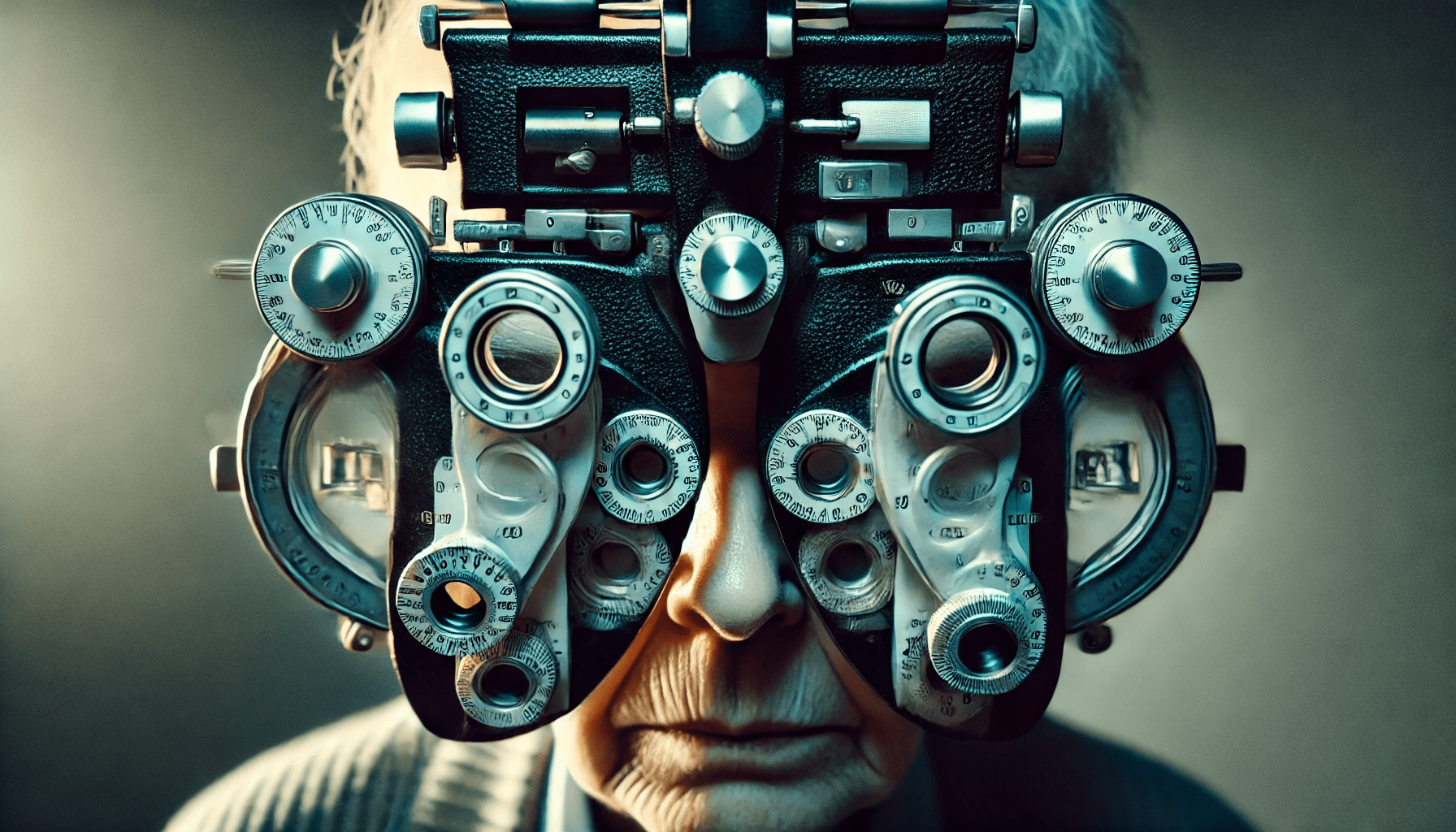Astigmatism is when either the cornea or the crystalline lens in the eye does n’t curve in the usual way. One may experience squinting or have fuzzy vision. Corrective lenses can frequently treat it, but surgery may be an option.
One kind of vision issue known as a refractive defect is Astigmatism. Other refractive defects include nearsightedness (myopia), farsightedness (hyperopia) ,diplopia, Age-related farsightedness (presbyopia) which happens with aging.
Refractive crimes are common. In fact, the National Eye Institute estimates that further than 150 million people in the United States have a refractive error.According to research, astigmatism is the most prevalent type of refractive error in both adults and kids worldwide.
In this composition, we detail the symptoms and causes of astigmatism and explain how eye croakers can treat it.
Symptoms
The following are common signs and symptoms of astigmatism:
- blurred or malformed vision at all distances
- headaches
- squinting in order to see easily
- eyestrain, especially when the eye has to concentrate for long ages
- difficulty seeing or driving at night
A person with these symptoms may not have astigmatism, but it’s judicious to have an eye test to check.
Types
Different types of astigmatism include:
- Corneal astigmatism: This is the most common type of astigmatism.
- Lenticular astigmatism: This type of astigmatism occurs due to changes in the eye’s lens.
- Irregular astigmatism: In this type, the curve of the cornea is uneven.
astigmatism can also do with diplopia, myopia and hyperopia, or both
- Myopic astigmatism: Myopic astigmatism happens when astigmatism combines with diplopia, and the two angles in the cornea or the lens — the angles from top to bottom and side to side — are concentrated in front of the retina.
- Hypermetropia astigmatism: This occurs when astigmatism combines with astigmatism, and the two angles are concentrated behind the retina.
- Incongruous astigmatism: This is the situation where one wind causes astigmatism symptoms while the other causes diplopia symptoms.
astigmatism can also be regular or irregular:
Regular Astigmatism
still, the two angles are at a 90- degree angle to each other, and the curve of each is invariant, If astigmatism is regular.
Irregular Astigmatism
In irregular astigmatism, the two angles are not at 90- degree angles to each other, and the curve of each is not invariant or indeed. Irregular astigmatism is often associated with keratoconus, a corneal thinning condition, or with trauma or surgery.
Causes
Astigmatism is the result of an uneven curvature of either the lens or the cornea.
The cornea is a transparent subcaste of towel that covers the front of the eye. Light is transmitted and focused onto the back of the eye.
In a person with astigmatism, the cornea is frequently egg- or football- shaped and angles more from top to bottom than it does from side to side, rather than being impeccably round. Consequently, two spots on the retina will get more light than one, leading to hazy or sometimes double vision.
Although the exact cause of certain people’s inborn corneal malformations is unknown, there might be a hereditary component. Compared to babies born close to their due date, preterm babies are more likely to experience astigmatism.
Certain types of surgery or eye injuries that beget corneal scarring may also beget irregular astigmatism. Keratoconus is another implicit cause of irregular astigmatism. In this degenerative complaint of the eye, the cornea gradationally thins and changes to a further conical shape.
The most common cause of lenticular astigmatism is an eye lens with a desultory shape.
Opinion
The early discovery and treatment of astigmatism are important.
An eye specialist may use the following ways when examining the eyes:
Visual perceptivity test A visual perceptivity test checks how well a person can read letters or characters at a distance. It generally involves reading lines of letters on a map. The letters come precipitously lower on each line.
Keratometry The amount of light reflected from the surface of the cornea is measured with a keratometer.This provides an eye croaker with information on the shape and curvature of the cornea.
Corneal geomorphology Corneal geomorphology is a type of imaging technology that provides measures of the cornea alongside images. In comparison to keratometry, this provides a far more thorough evaluation.
Refraction Refraction assesses how the eyes concentrate light, and it involves placing a series of lenses in front of the eyes. An eye croaker will inquire as to which lenses improve a person’s vision.
For utmost children, the American Optometric Association( AOA) recommends eye examinations
- at 6 – 12 months
- at 3 – 5 times
- before first grade
- every time after first grade
Children at high risk of astigmatism can benefit from additional, routine examinations.
Grown-ups should have an eye test every 2 times until the age of 65, when they should have an eye test every time.
Grown-ups with an increased threat of eye problems will need to see the eye croaker annually, anyhow of age. Those with a history of eye disorders and those with chronic illnesses like diabetes that can impact the eyes are examples of these unique individuals.
Treatment
Still, the doctor may suggest no treatment at each, If the astigmatism is mild. If not, the typical course of action is corrective lenses, though some patients could ultimately choose to have ray surgery.
Corrective lenses for astigmatism
Corrective lenses can help rightly design images onto the retina. These may be in the form of spectacles or contact lenses.
Lenses for astigmatism will need:
- an ability to universally compensate for near- or farsightedness
- an apparatus with cylinder lens power to address astigmatism
- an axis designation indicating the location of the astigmatism
still, their lenses will bear fresh, or add, If a person has presbyopia.
Orthokeratology, or corneal refractive remedy
Orthokeratology involves wearing an especially fitted, rigid contact lens during sleep to reshape the cornea. This does n’t permanently ameliorate vision, but the person may find that they can see better for at least several hours after wearing it.
Surgery
Some people with astigmatism may wish to suffer ray eye surgery to correct their vision. The most common procedure is ray in situ keratomileusis( LASIK).
LASIK
Using a keratome device or femtosecond laser, the physician creates a thin hole in the cornea during this surgery. They also lift the delirium and use a ray to carve the shape of the cornea under the delirium. Subsequently, the surgeon folds the delirium back into place where it’ll heal.
LASIK originally causes dry eyes and changing vision, but these side goods, along with any others, generally vanish within a month.
Other ray options include photorefractive keratectomy( PRK) and ray epithelial keratomileusis( LASEK).
PRK
A portion of the cornea’s exterior defensive subcaste is removed during PRK surgery. This can beget moderate- to-severe pain. A ray also eliminates the towel, which modifies the cornea’s curvature.
In order to control discomfort, the surgeon will implant a girth contact lens on the eye throughout the procedure.
LASEK
In LASEK, the surgeon removes a thin subcaste of towel from the cornea. Prior to changing the corneal towel, they also employ a ray to reshape the cornea.
Who should avoid ray surgery?
Ray eye surgery might not be appropriate for someone with:
- is under 18 times of age
- has vision that’s still changing
- has severe astigmatism
- having diabetes, which they find difficult to manage
- is pregnant or breastfeeding
- has a condition that affects the vulnerable system, similar as rheumatoid arthritis, lupus, or HIV
- has another being eye condition, similar as:
- severe diplopia or astigmatism
- keratoconus
- cataracts
- glaucoma
- severe dry eyes
- has a history of certain eye infections, similar as optical herpes or keratitis
- is taking certain specifics that may affect mending, similar as isotretinoin( Accutane) or oral prednisone( Rayos).
Risks
The pitfalls of surgery can include:
- dry eyes
- light perceptivity
- light or halos around lights
- double or vague vision
- over- or undercorrection, which may affect in a need for corrective
lenses after surgery
- retrogression, in which vision impairments recur after surgery
- vision loss
Overall, the threat of complications is low.According to a 2020 study of 31,921 LASIK surgeries, there was only a 1.3 prevalence of unfavorable effects. The prevalence of serious adverse goods was indeed lower at 0.4.
Summary
Astigmatism happens when the cornea has an abnormal shape, leading to blurred vision in the affected eye or eyes.
People are frequently born with astigmatism. Still, it can occasionally do later in life due to, for illustration, an eye injury or former eye surgery.
For astigmatism, contact lenses or glasses are usually an effective treatment. Surgery is also an option for eligible individualities.
numerous people with astigmatism may not be apprehensive that they’ve it until they’ve an eye test. For this reason, it’s important to suffer regular eye examinations to identify and treat any eye problems.


1 thought on “Astigmatism: What it’s and how to treat it Everything You Need to Know”
Comments are closed.